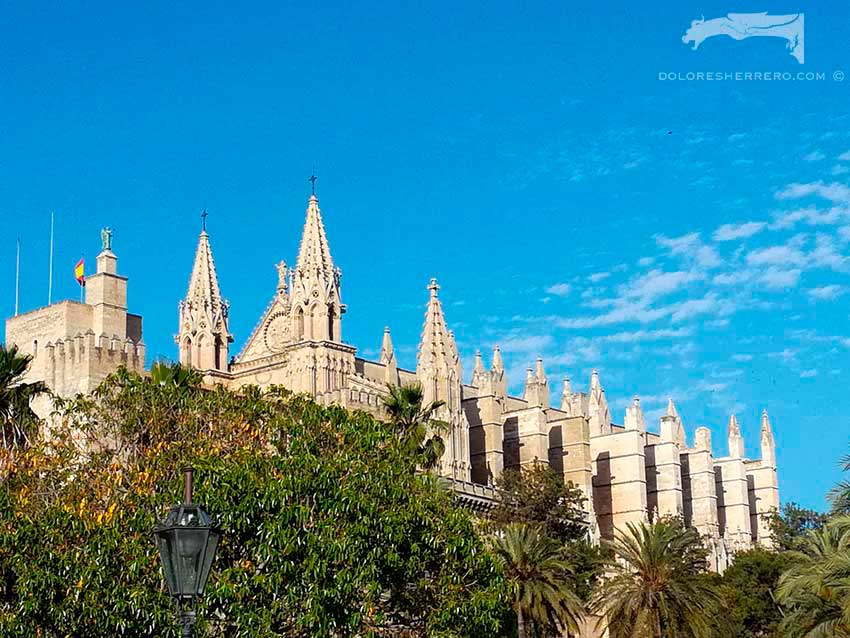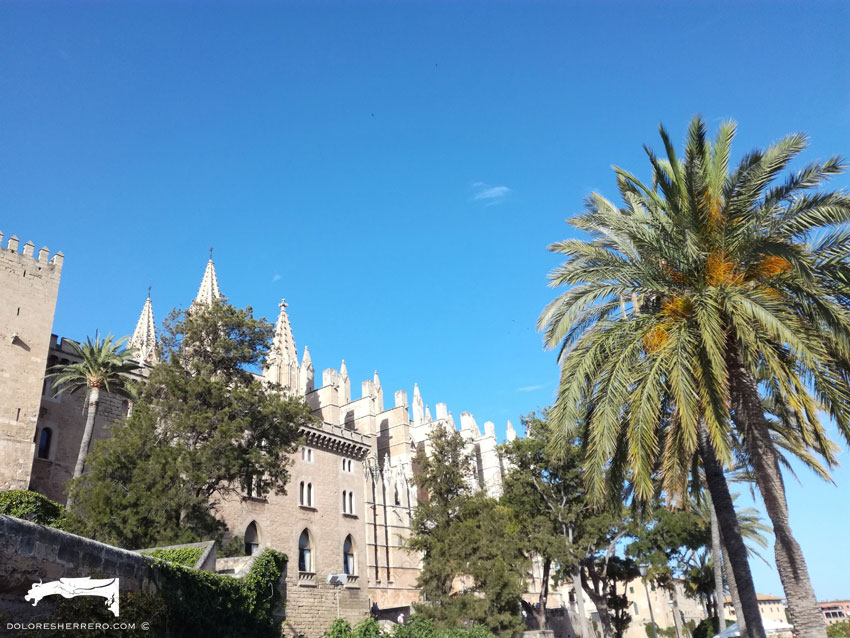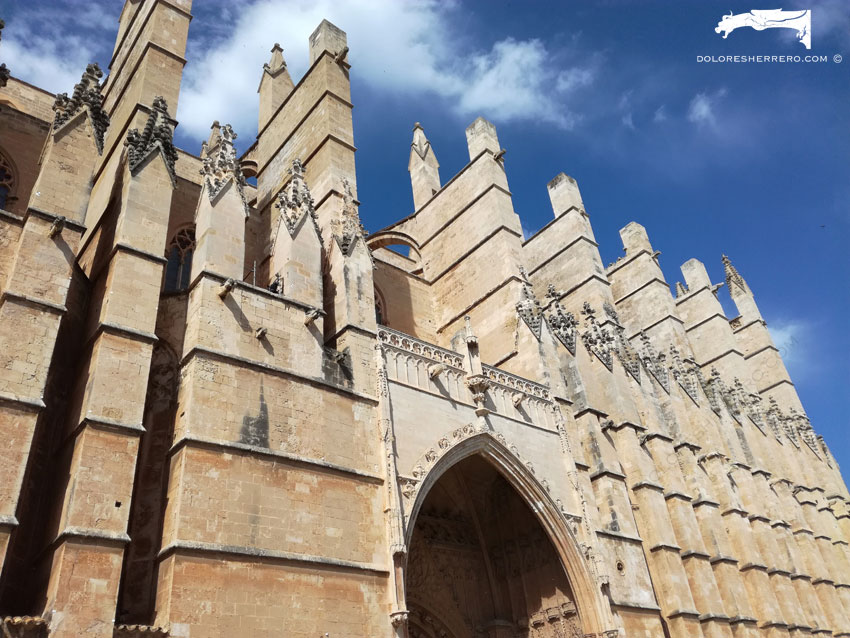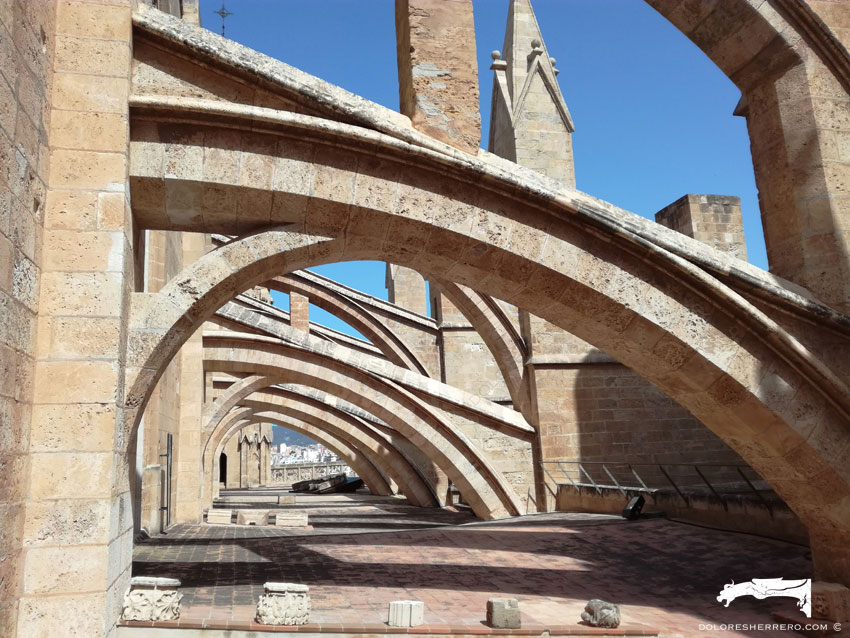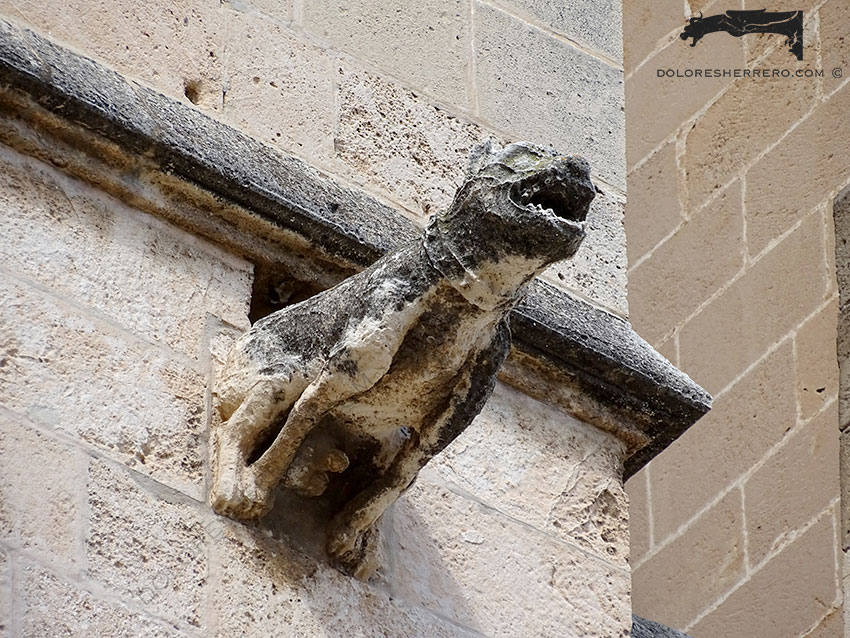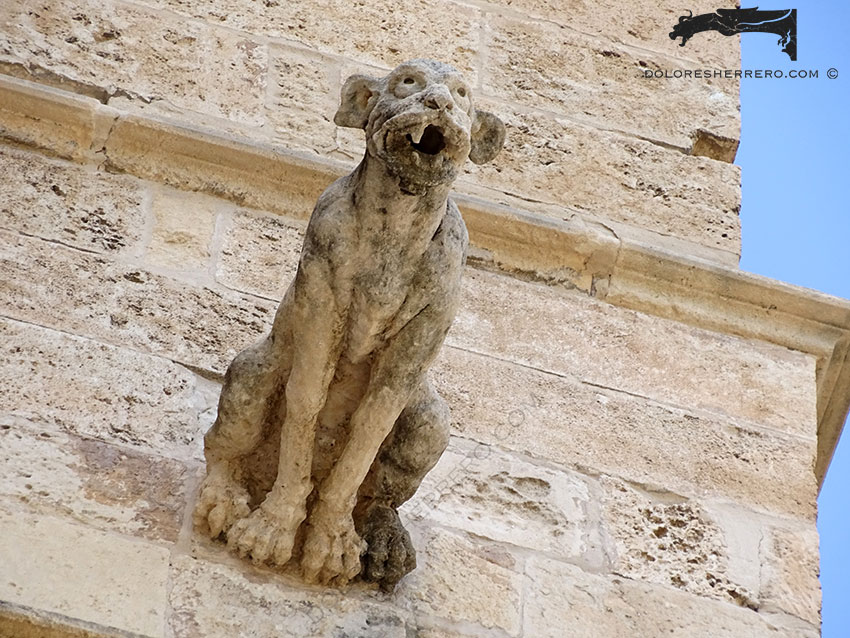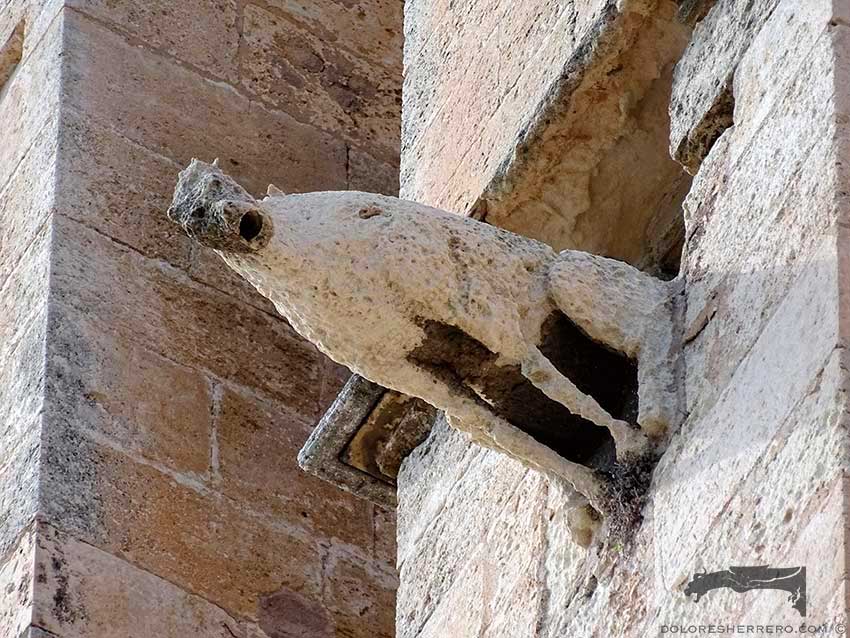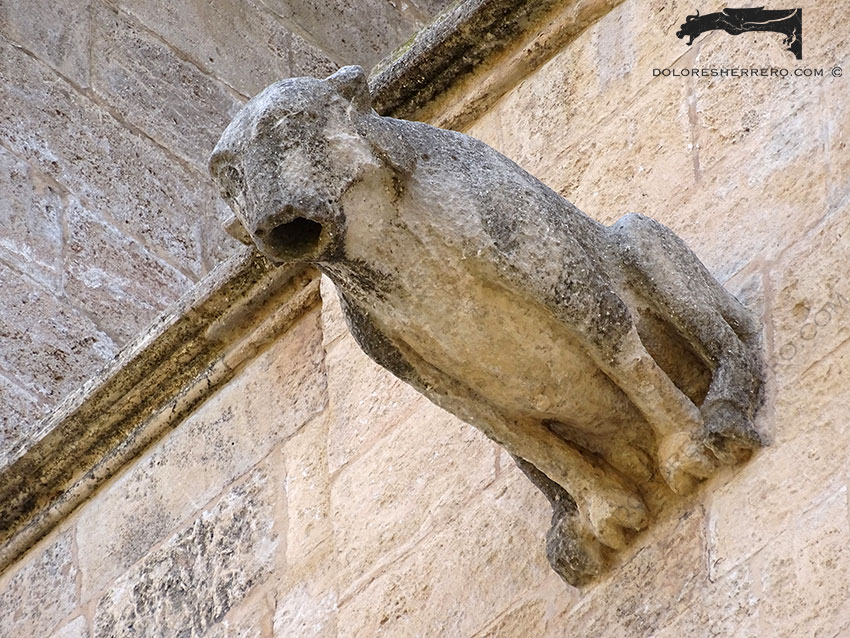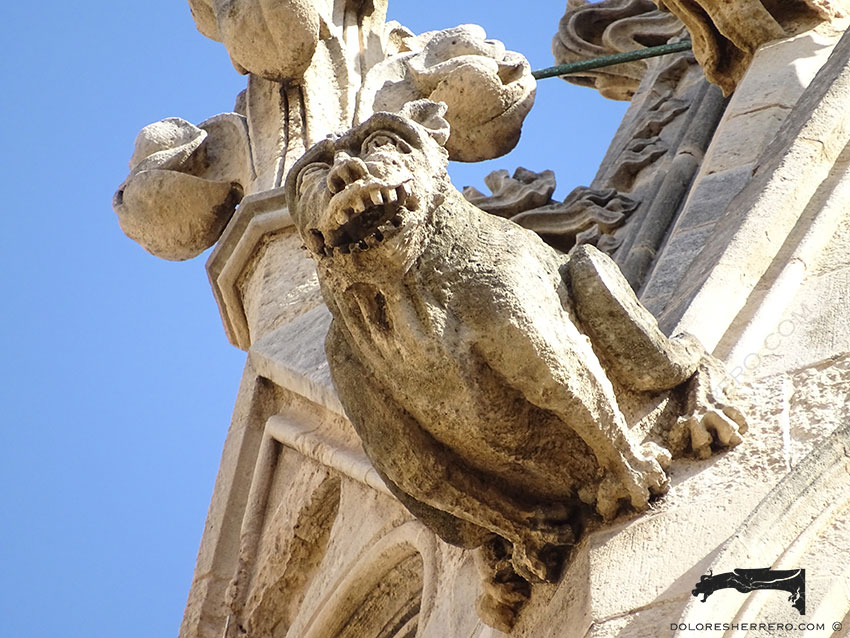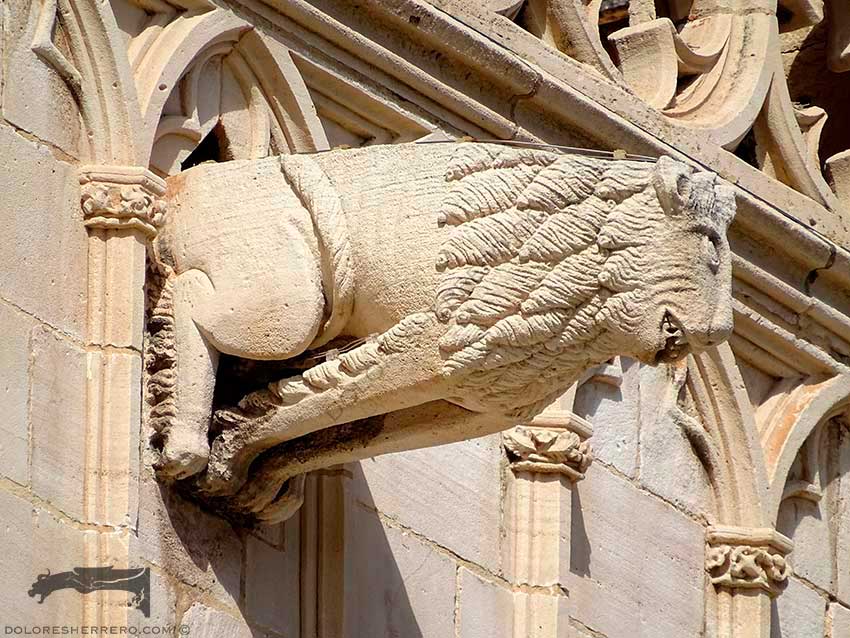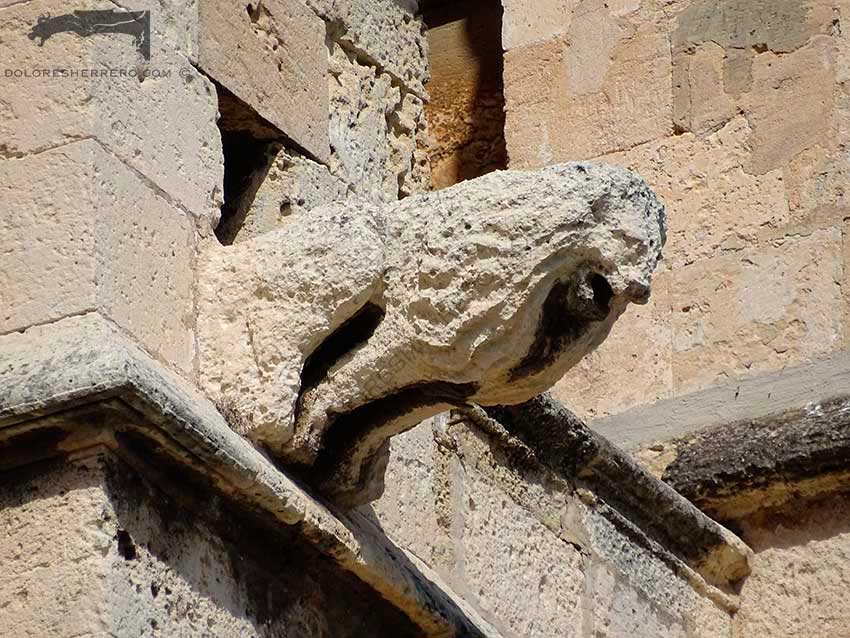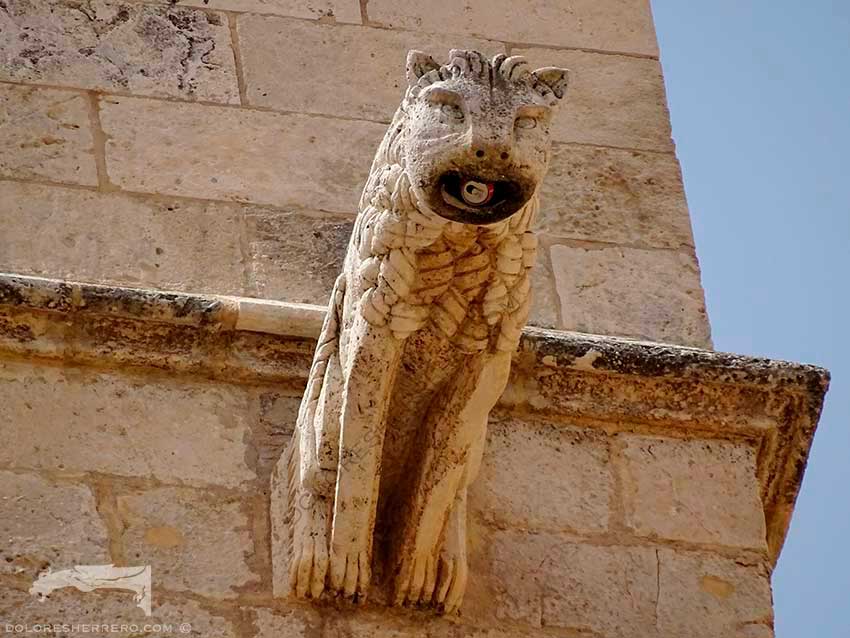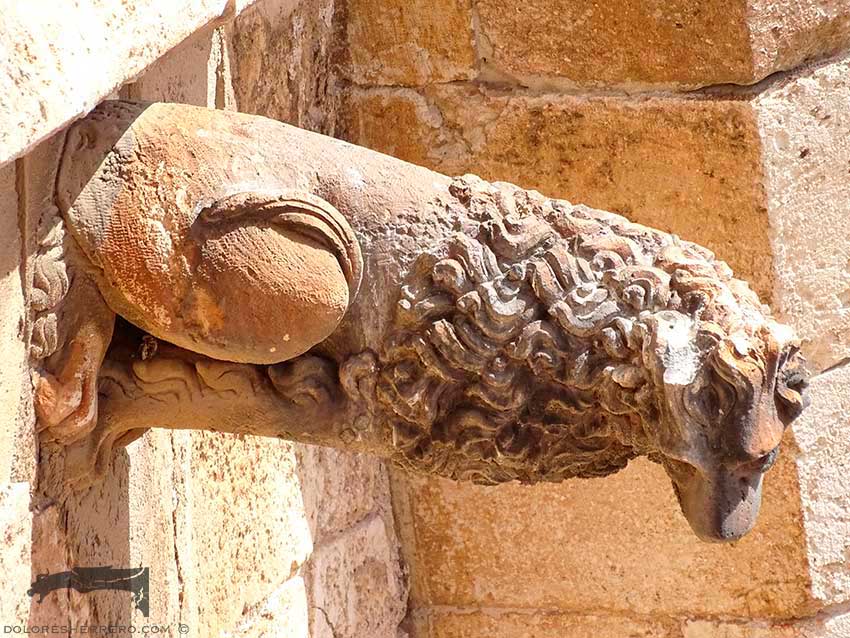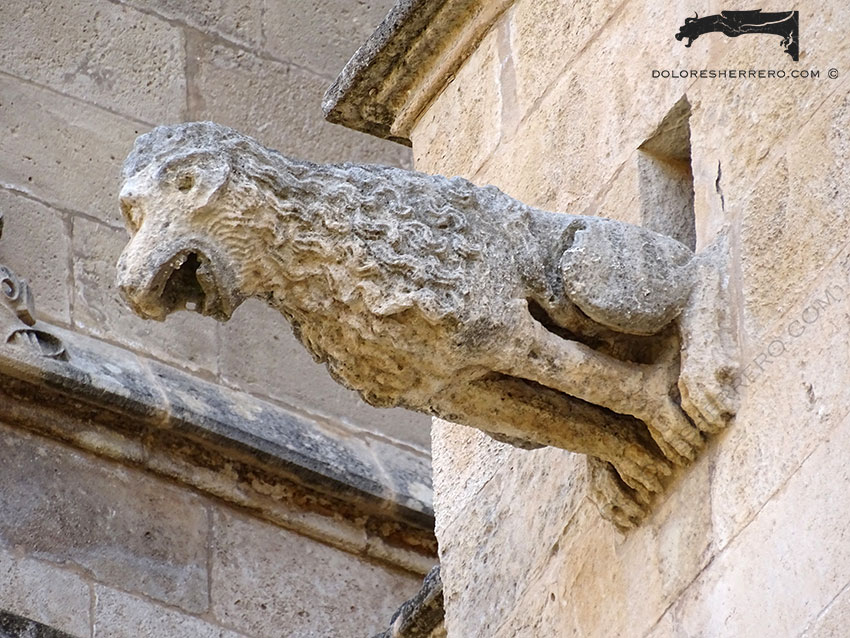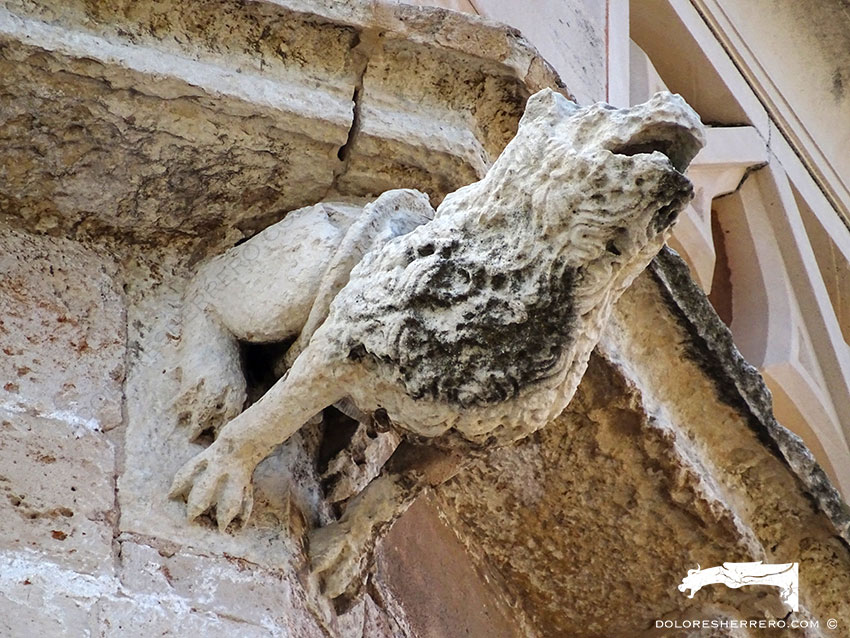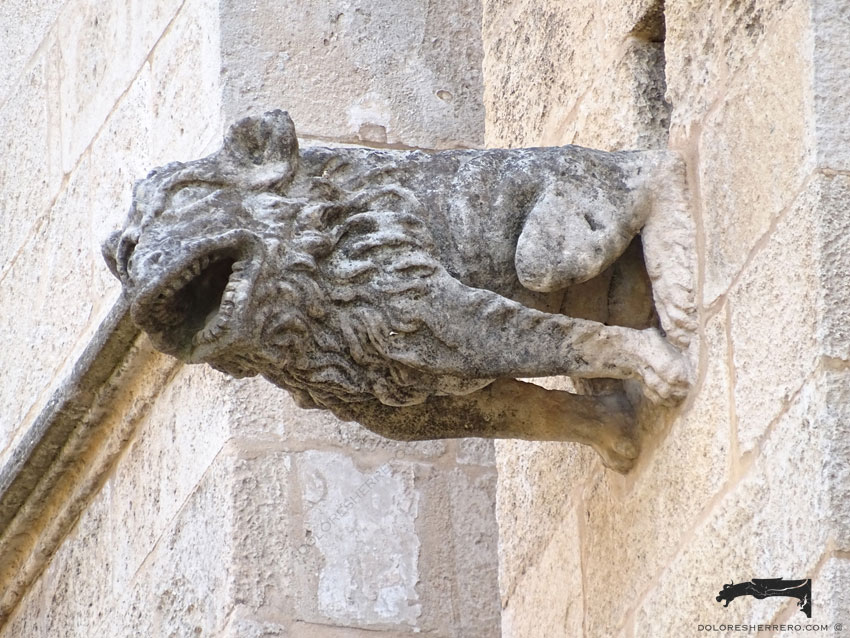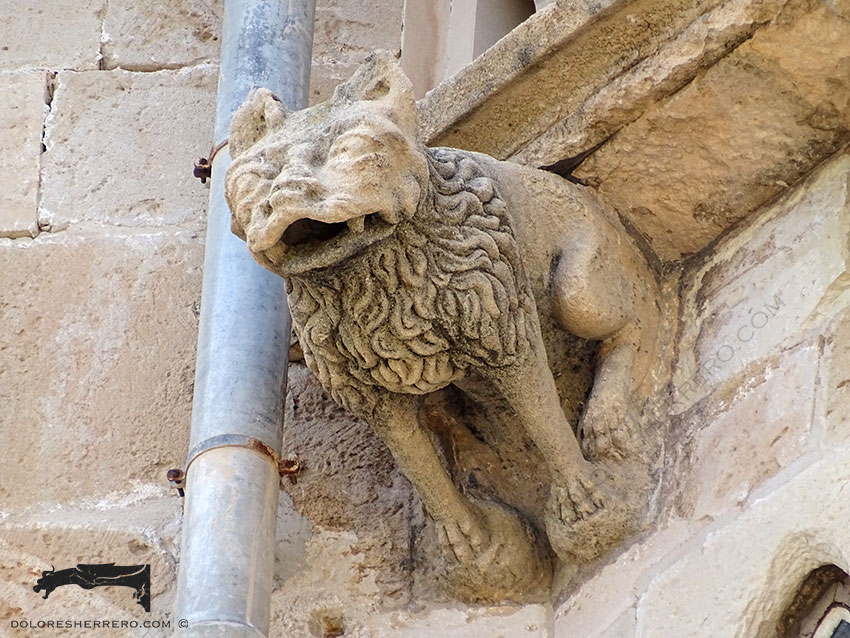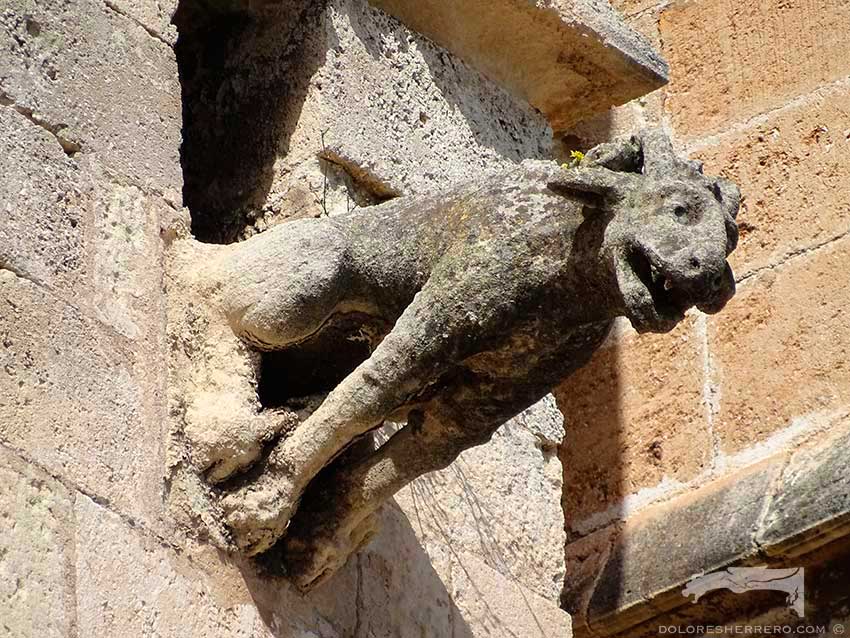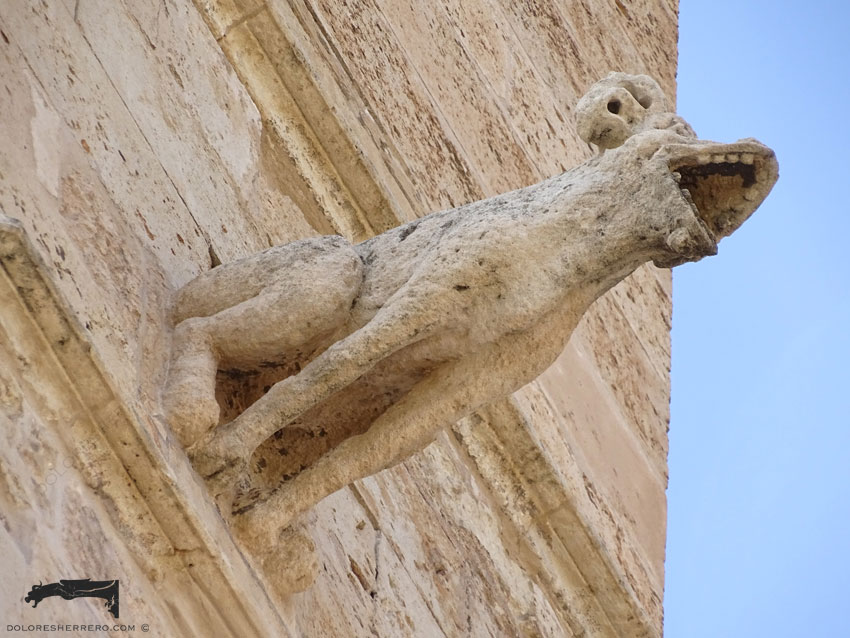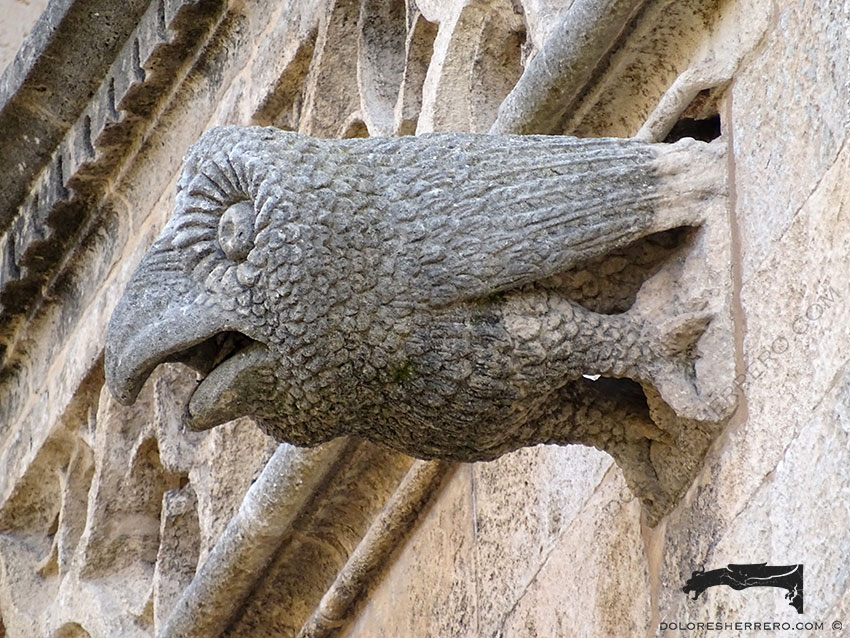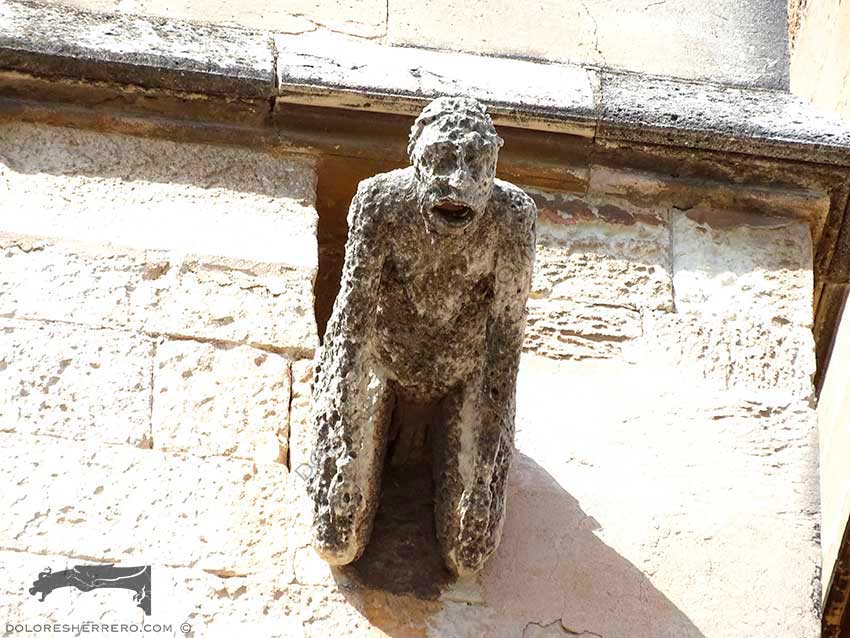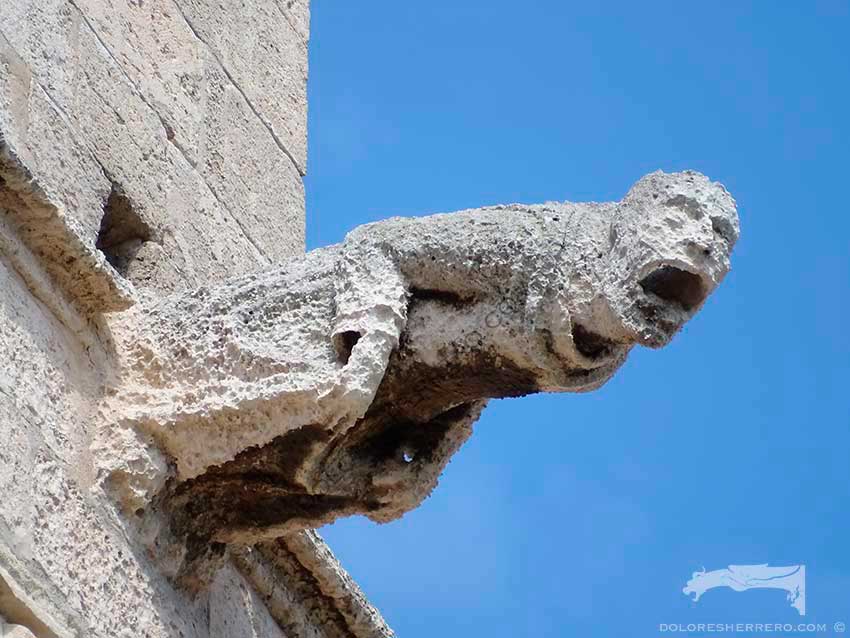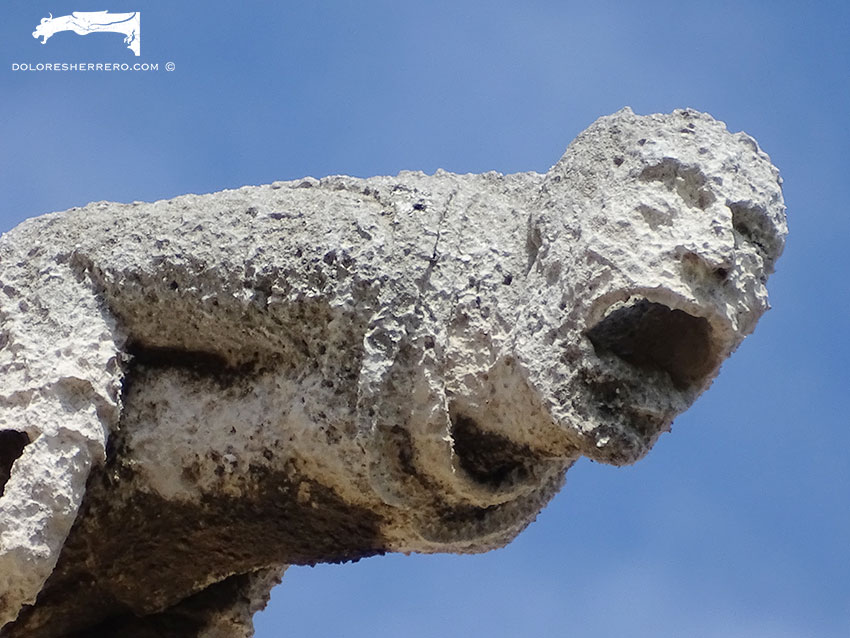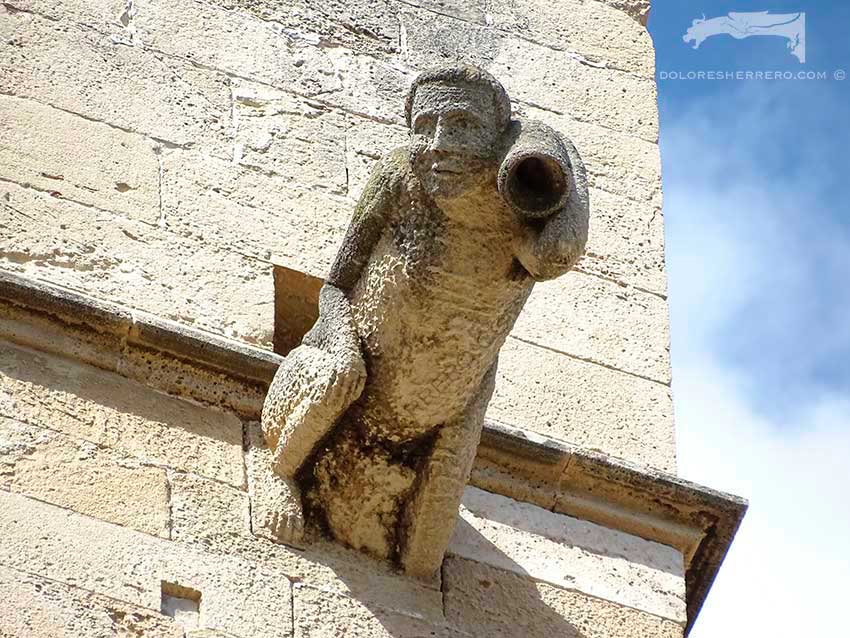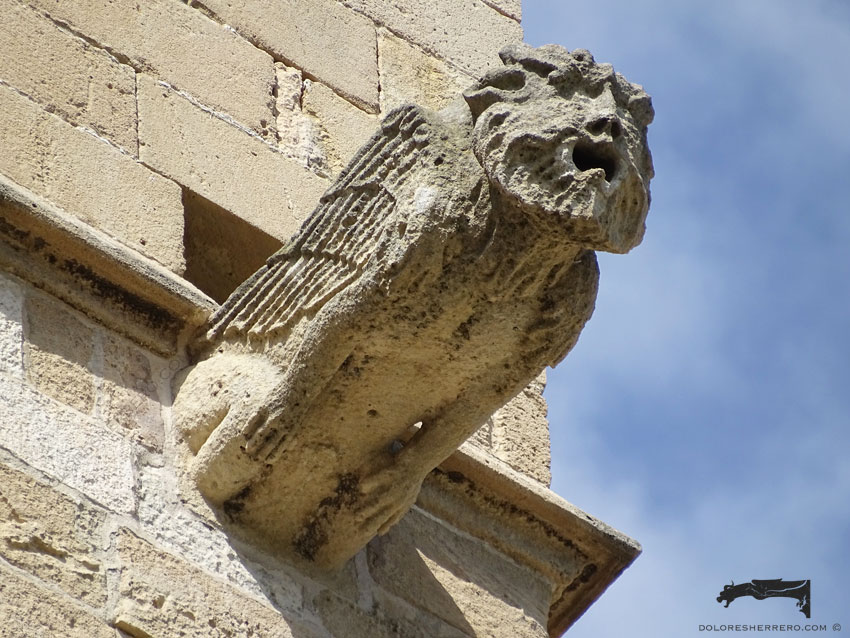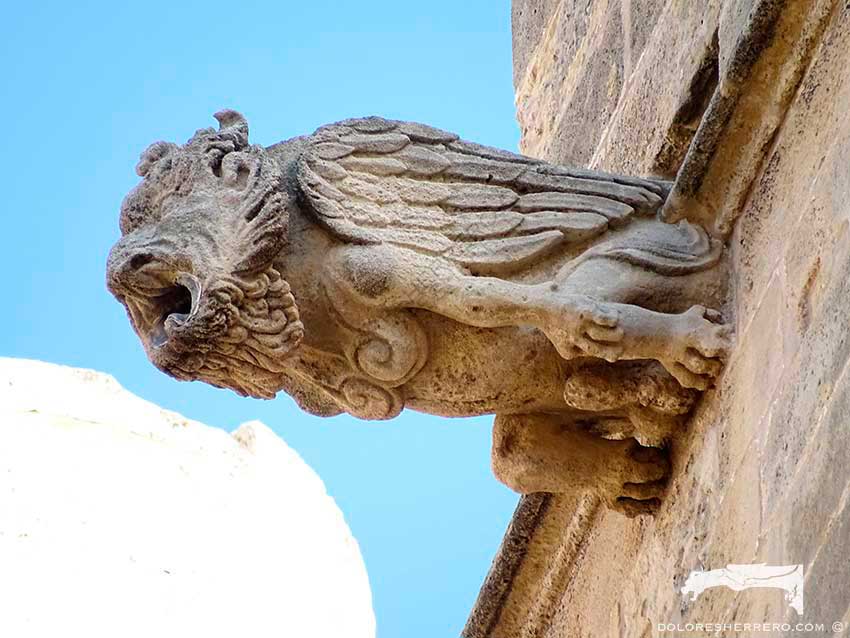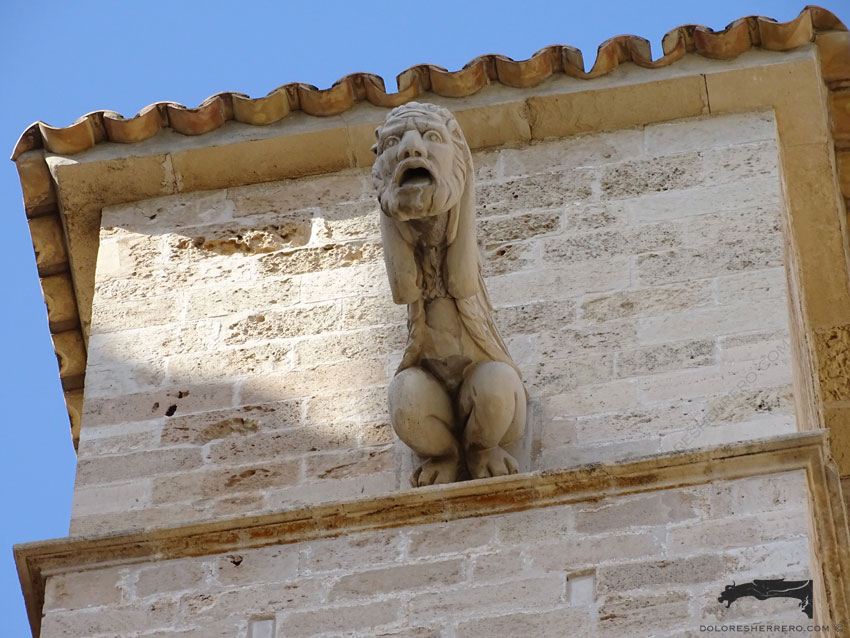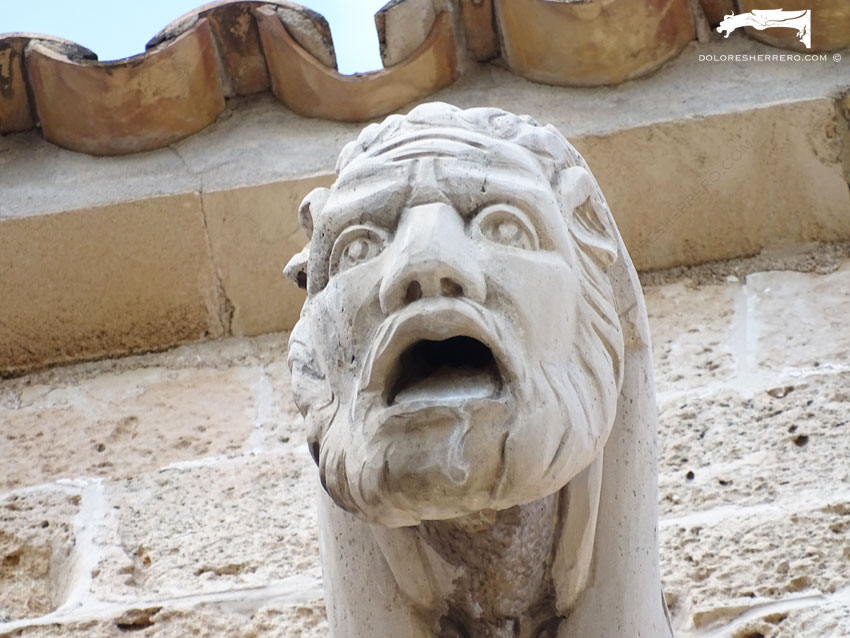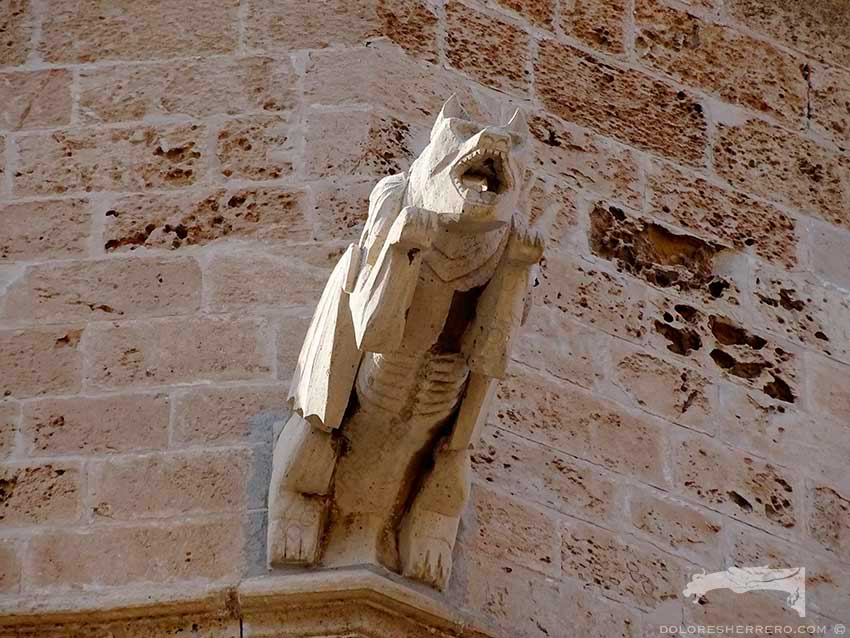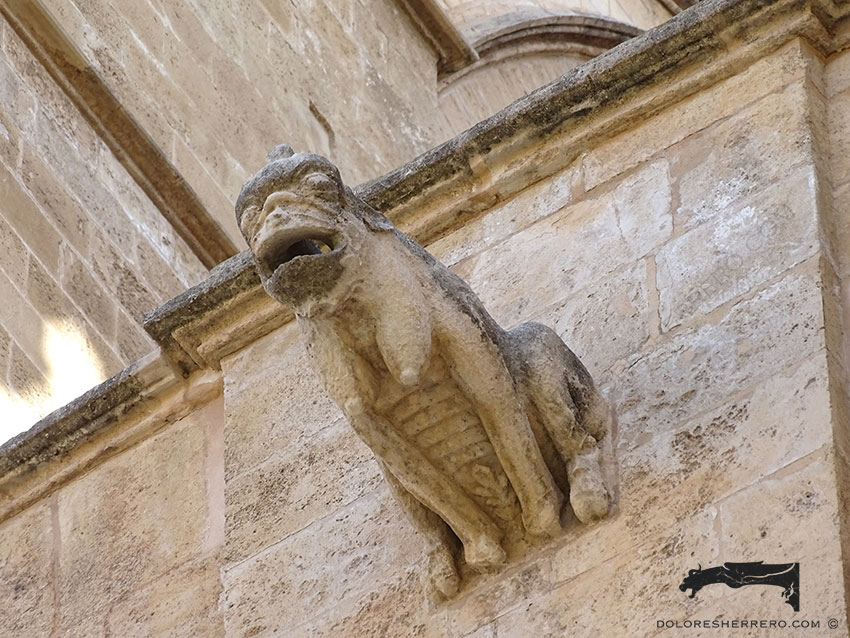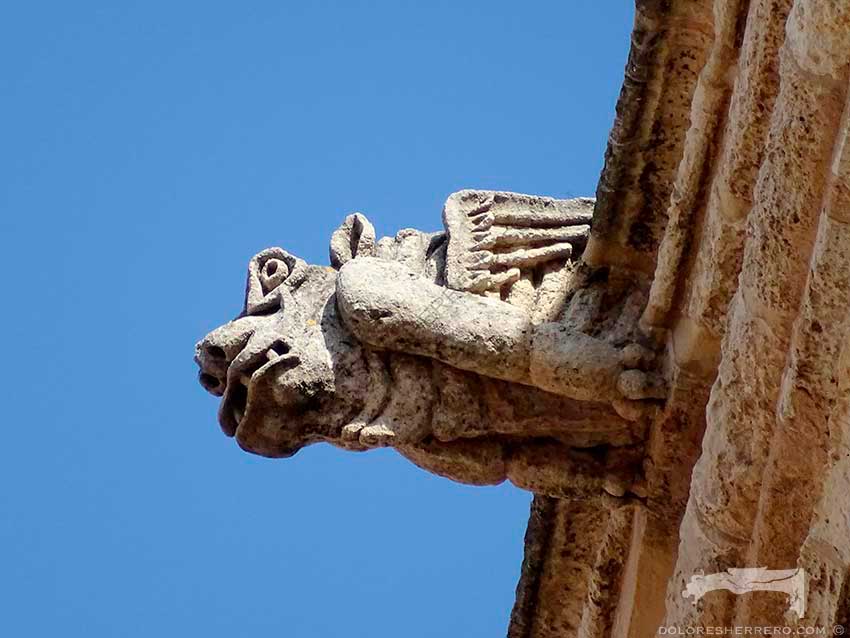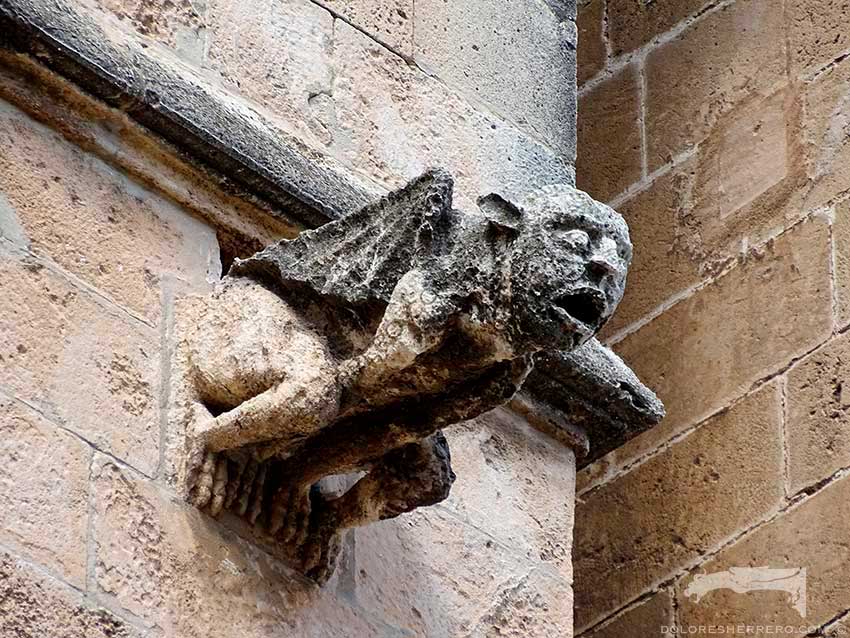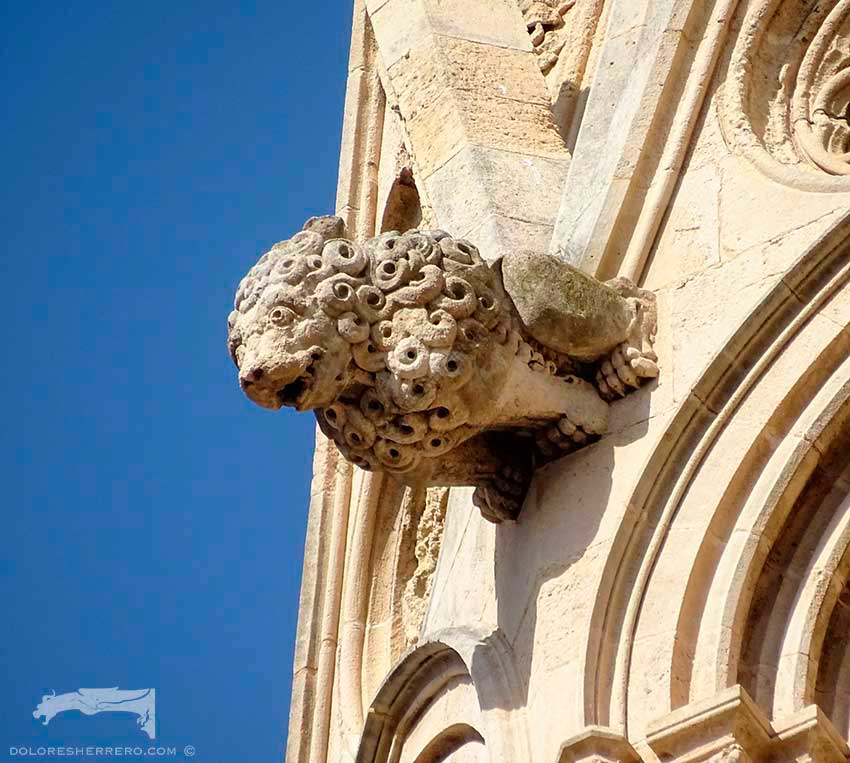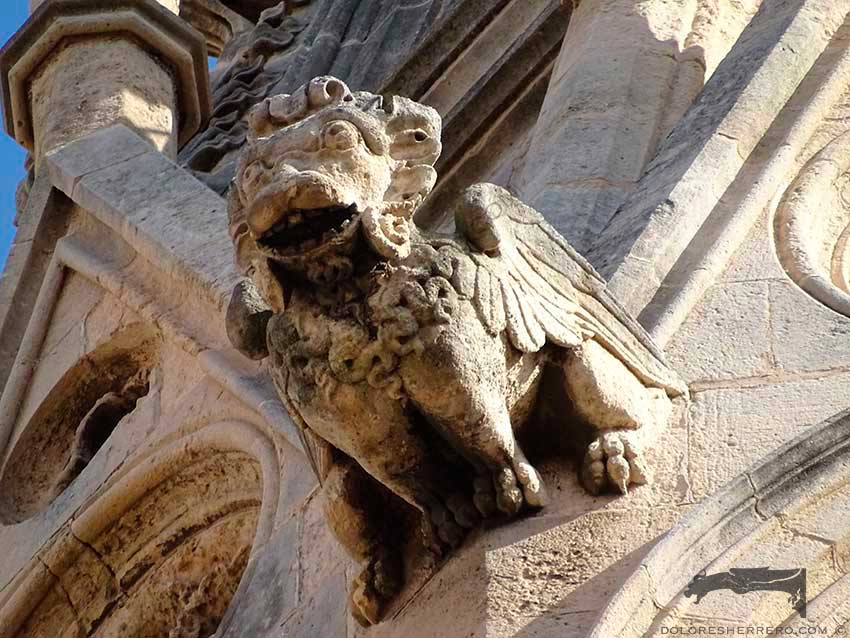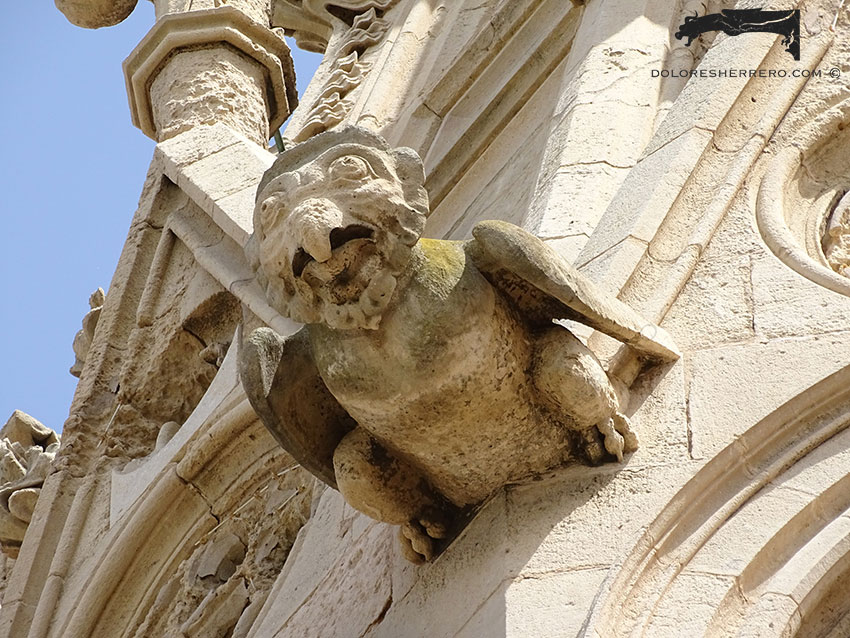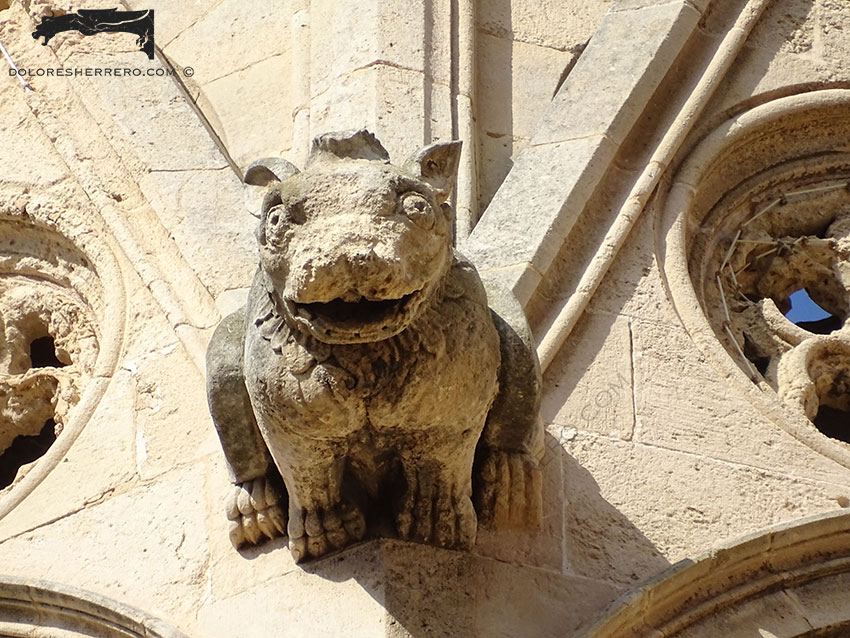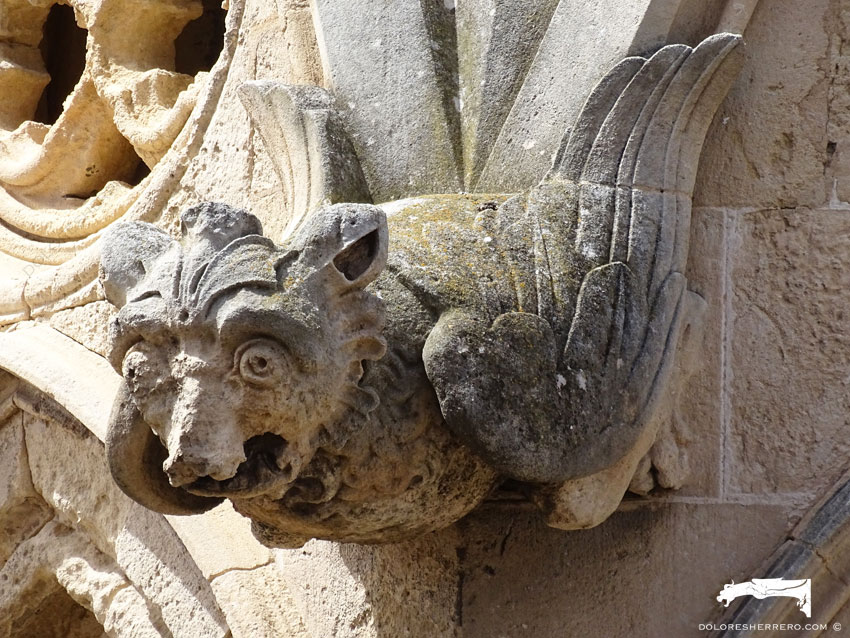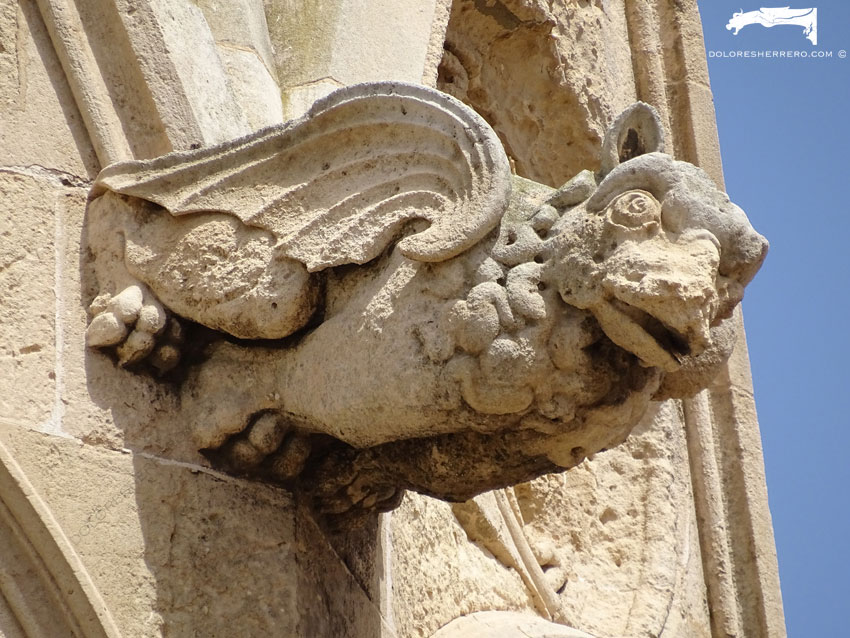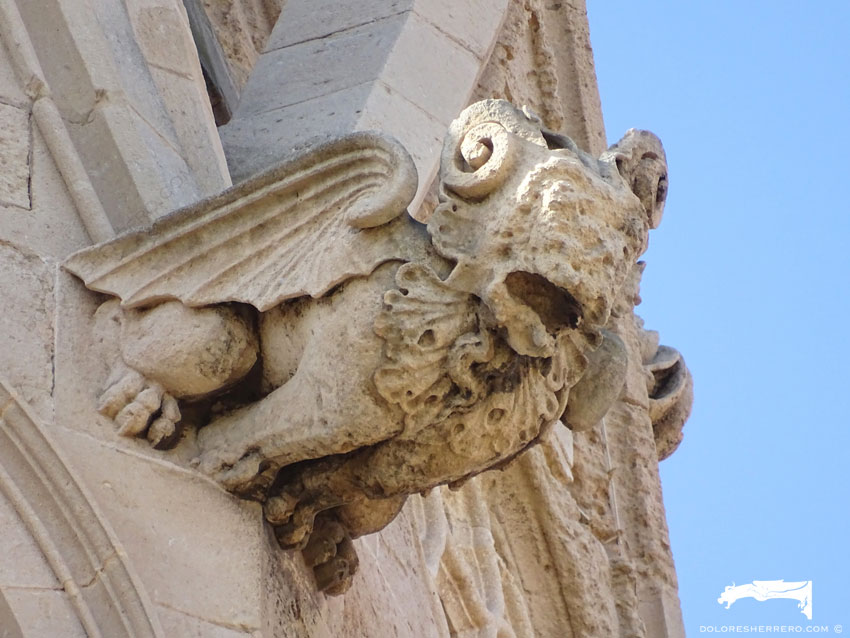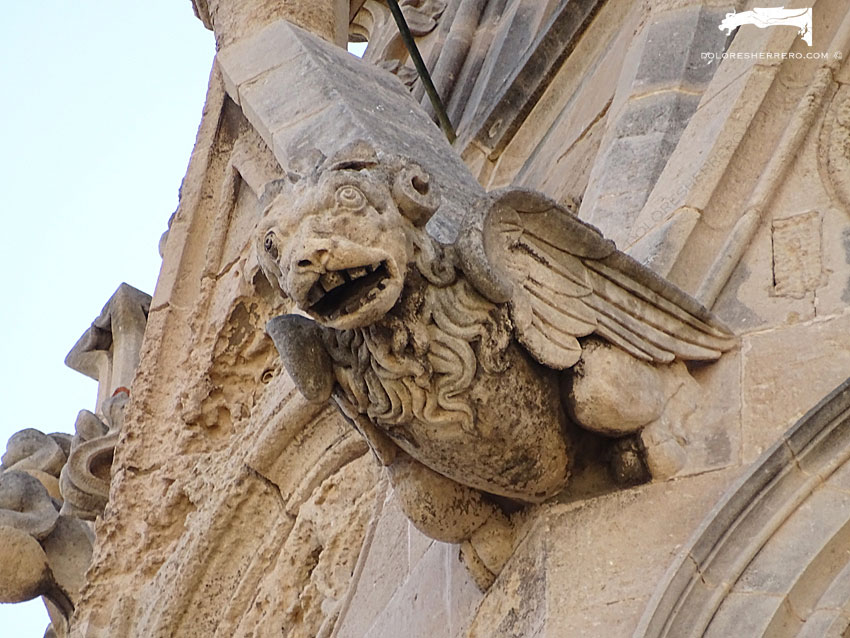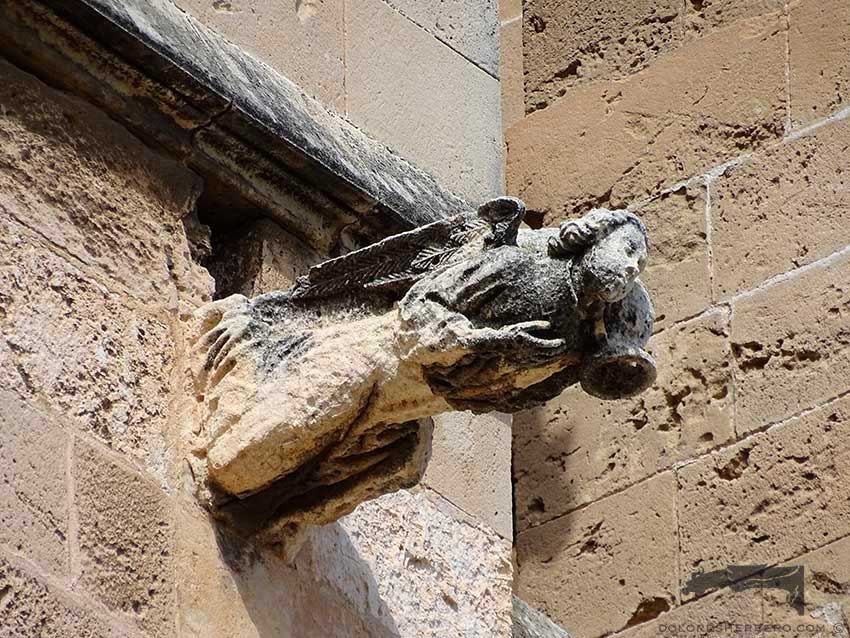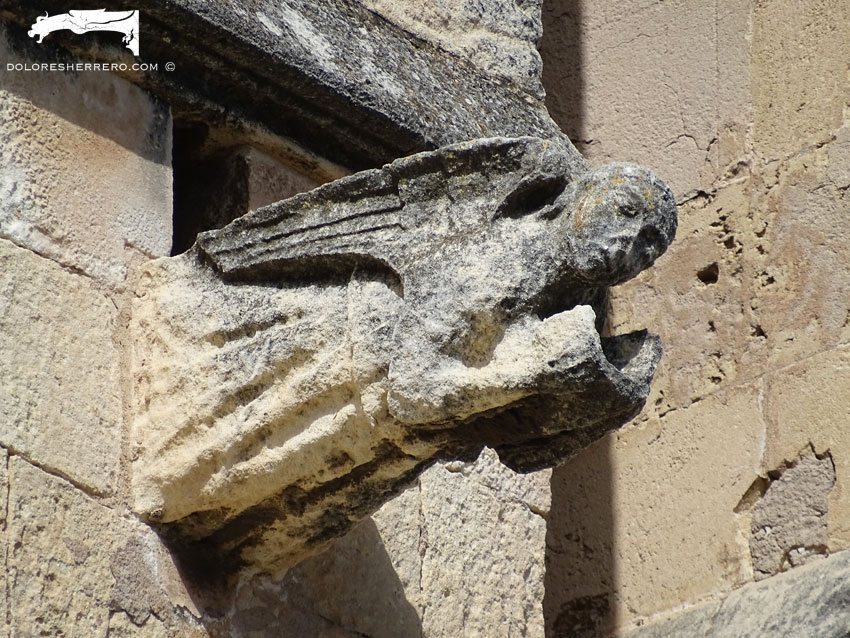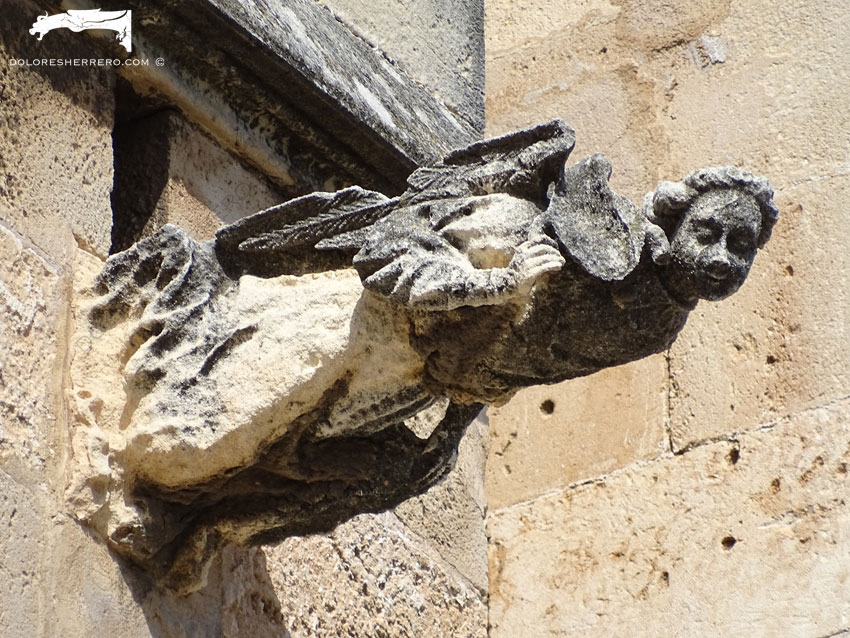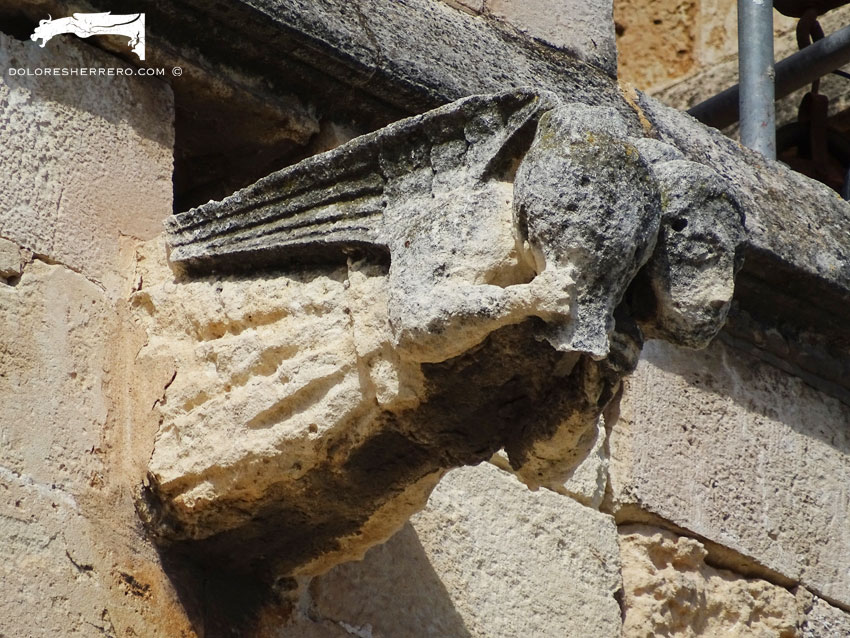In this post, we want to look at some unique and exceptional gargoyles. These are unique not solely due to their type or style, but also because of their location.
We are referring here to the gargoyles in the Cathedral of Palma de Mallorca (Spain), a jewel of Spanish heritage, and our first blog post on the Balearic Islands.
Built on the site of a mosque, construction of the Cathedral of Santa María began around 1300. This superb building is stunningly beautiful, with an impressive, fortress-like outline. It is unquestionably one of the most magnificent cathedrals in Spain.
The gargoyles are equally spectacular, with figures featuring a variety of styles and themes, some of which are also highly original.
Animal
The animal figures include some dogs. There is one wearing a collar and displaying its genitals, another with fangs and hollow eyes that seem to gaze upwards, and two very original and surprising dogs: one with a body that is out of proportion to its head which looks a little demonic, and another with a grotesque and almost comic appearance.
- Palma de Mallorca Cathedral
- Palma de Mallorca Cathedral
- Palma de Mallorca Cathedral
- Palma de Mallorca Cathedral
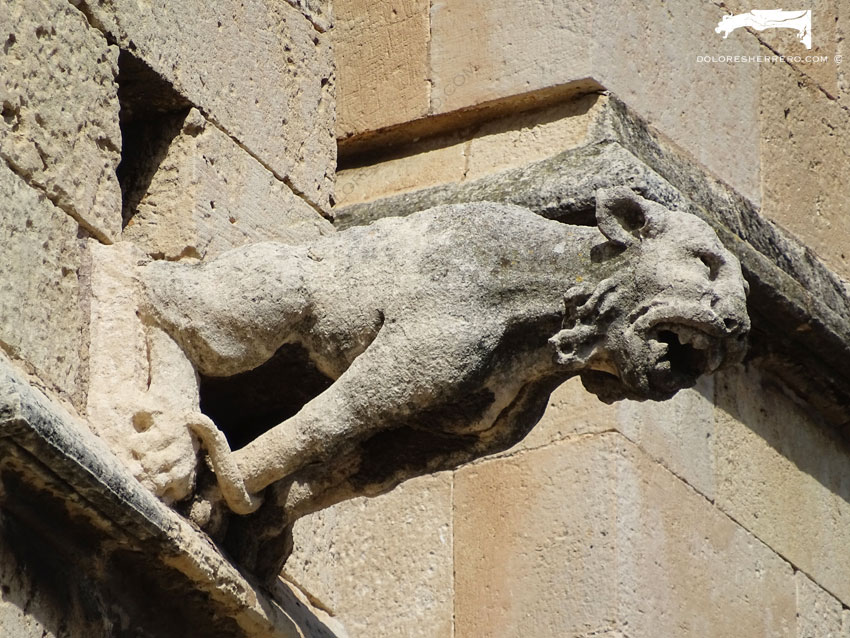
There are also quite a few lions, all of which are different, providing a very interesting stylistic diversity. Their manes are magnificent and exceptionally sculpted, and some are extravagant and odd. One of them has a mane formed of tufts of wool, a lion that recalls images from ancient art (Persia, Mesopotamia), while another has an enormous, voluminous mane. Others are simpler, more schematic and geometric. For example, there is one with a beautiful corded mane. Finally, we highlight a lion with a magnificent mane and a tilted head looking downwards, one of the most beautiful lion gargoyles we have seen so far.
- Palma de Mallorca Cathedral (Spain)
- Palma de Mallorca Cathedral (Spain)
- Palma de Mallorca Cathedral (Spain)
- Palma de Mallorca Cathedral (Spain)
- Palma de Mallorca Cathedral (Spain)
Other figures include two rams and a very peculiar, highly detailed bird.
- Ram
- Ram
- Palma de Mallorca Cathedral (Spain)
Animal monster
As for animal monsters, or hybrids, there is a fabulous winged ram with ornamented horns in a very modern style.
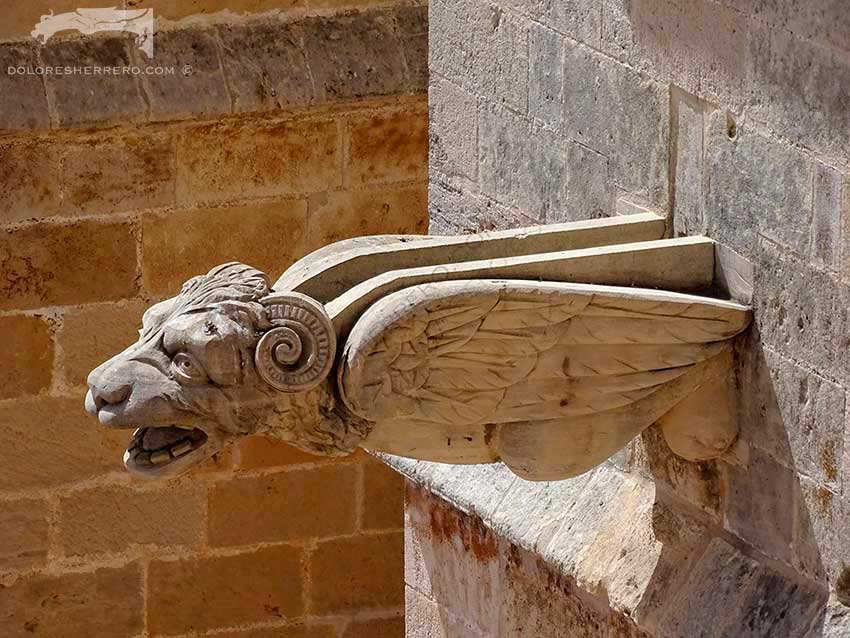
Human
There is also a variety of human gargoyles. One is an apparently naked, kneeling man whose hands are resting on his thighs. Although the sculpture seems coarse, with grainy, rough stone, this imposing figure remains highly expressive, with a ghostly aspect. There is also a seated man with his hands resting on his knees and wearing long robes, another expressive gargoyle carved from rough stone. And there is a doccione, a naked man with one knee resting on the ground, who is carrying a vessel on his shoulder. As we saw in a previous post, the doccioni are gargoyles carrying an object or an animal from which the rainwater pours.
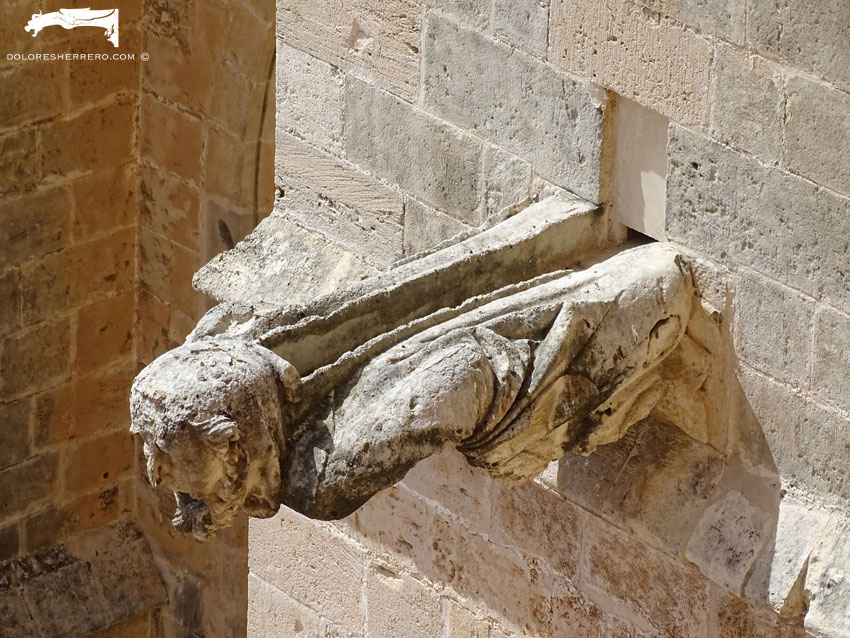
Anthropomorphic
Within the category of anthropomorphs, there are some strange and unique gargoyles distinguished by heads resembling the green man. They are winged but have human postures and faces, and one of them is displaying its genitals; as we said, they are very unusual. Another totally different anthropomorph in a modern style has wings but the head of a bearded man; it is squatting with its arms raised towards its head —although they also seem to be inserted into the body— in a very expressive gesture of anguish.
- Catedral de Palma de Mallorca
- Catedral de Palma de Mallorca
Devil
Among the devils, there is one with the head of a dog or wolf, membranous wings and prominent ribs; it is depicted in a rampant posture and is sculpted in a geometric, modern style. There is also another extraordinary, truly impressive gargoyle with a quadruped body and dragonish appearance that has hooves, women’s breasts, a leaf covering its genitals and an amphibian-type head, as well as one with a prominent windpipe and a grotesque appearance. The last one we want to show you is a stunning anthropomorphic devil with a human face, bat-like wings and enormous claws.
Two of the pinnacles have very interestingly original gargoyles and chimeras. These depict a variety of figures in terms of type, including animals (bird, lamb, dog) and hybrids carved in a strange, unique style due to their widely separated, bulging eyes and the upwards wings of some of them.
- Bird
- Lion
- Dog
- Animal monster
- Animal monster
- Animal monster
- Palma de Mallorca Cathedral (Spain)
- Palma de Mallorca Cathedral
- Animal monster
- Devil
- Devil
- Animal monster
We conclude with some gargoyles whose beauty astonished us as soon as we entered the cathedral. We are referring here to the cathedral’s marvellous angel doccione. It’s hard enough to find gargoyles in the form of angels —recall the beautiful angel in the Cathedral of Vitoria (Spain)— and even more so to find ones that are also doccioni. Their flowing robes, wings (some with herringbone decoration), faces, hair, gestures and expressions merit our contemplation and admiration.
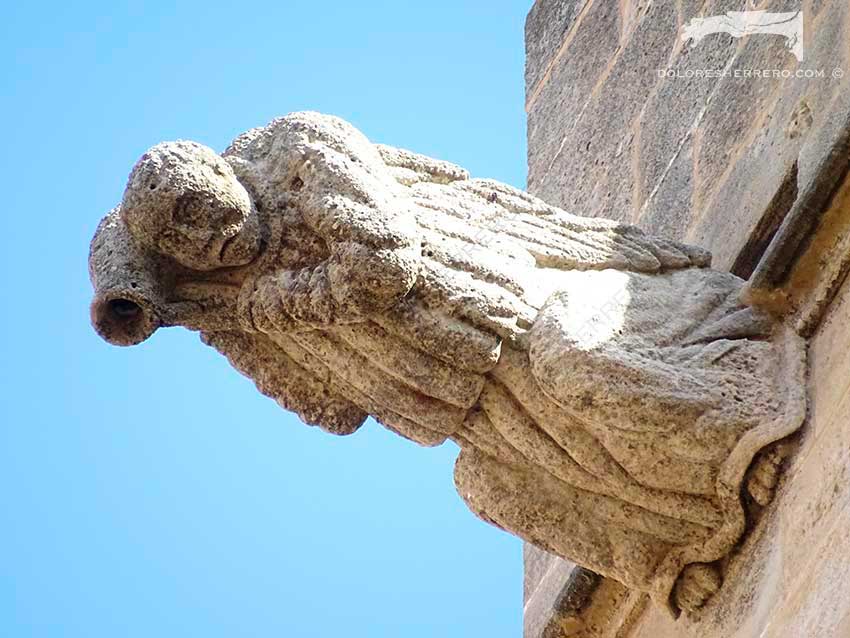
As we said at the beginning, the cathedral’s gargoyles are all extraordinary. Their variety of form and type together with their originality, expressiveness, plasticity and exceptional sculpting (geometric, schematic, with disproportionate bodies, etc.) recalling other artistic styles and periods (antiquity, expressionism, modernism) render them unique and beautiful.
When visiting the city of Palma, the first sight of the cathedral is breathtaking due to its size and beauty. Thanks to the kindness of the cathedral staff, we had the good fortune to be able to climb up to the roof and I have to say that it’s difficult to describe the feeling you get when seeing the cathedral from above, with a view of its flying buttresses, the gargoyles on the pinnacles —which are invisible from the ground— and one of its gorgeous rose windows. It’s an incredible experience that’s well worth it.
But it is even more stirring, if possible, to see the entire city from the highest point of the cathedral. Being up there allowed us to appreciate and admire Palma’s landscape and architecture. And when we stopped to look at its gargoyles from above, we were overwhelmed by emotion because we immediately thought “These gargoyles are looking out to sea”.
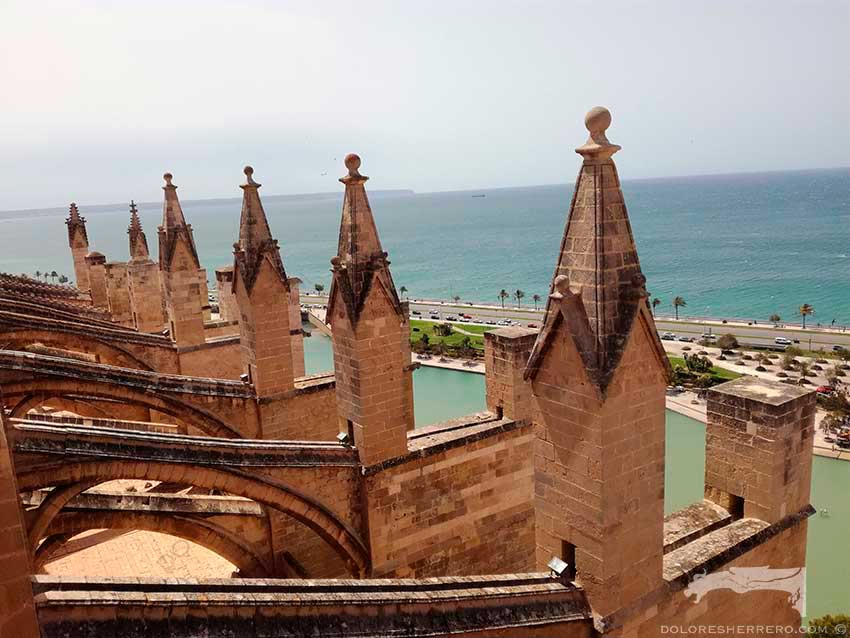
Bibliography consulted
VV. AA., El Gótico. Arquitectura. Escultura. Pintura, trad.: J. García Pelegrín y P. de la Riestra, Colonia, Könemann Verlagsgesellschaft mbH, 1998.

Doctor of Art History and researcher specializing in the study of gargoyles.
I am Dolores Herrero Ferrio, and my thesis, “An Approach to the Study of Gargoyles of Gothic Cathedrals in Castilla and León”, is dedicated to the study of these fascinating figures.
If you like gargoyles and art history, you will also enjoy my book, “The Gargoyle and Its Iconography,” a book I have written with great care for those interested in the world of gargoyles.
I have created my own Encyclopedia of Gargoyles, a Gargopedia to share with you, where you will discover all the secrets and wonders of these enigmatic sculptures.
I hope you enjoy this Gargopedia as much as I have enjoyed creating it, and remember that each gargoyle has a story to tell, and here you will discover them all.
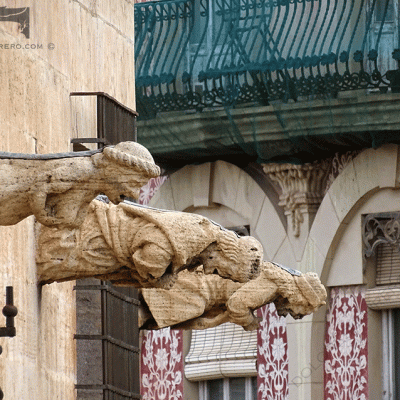 The Gargoyles of Valencia Cathedral
The Gargoyles of Valencia Cathedral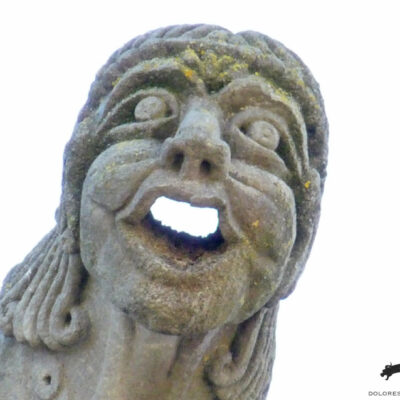 The Archetypal Gargoyles at Mirepoix Cathedral
The Archetypal Gargoyles at Mirepoix Cathedral The Gargoyles of Compostela: Guardians and Monsters within its Architecture
The Gargoyles of Compostela: Guardians and Monsters within its Architecture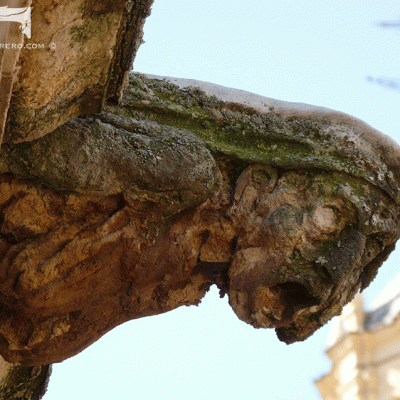 The Enigmatic Gargoyles of the Monterrey Palace in Salamanca
The Enigmatic Gargoyles of the Monterrey Palace in Salamanca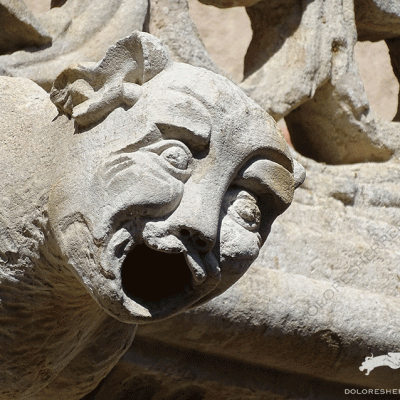 The Emblematic Gargoyles of Salamanca’s Casa de las Conchas
The Emblematic Gargoyles of Salamanca’s Casa de las Conchas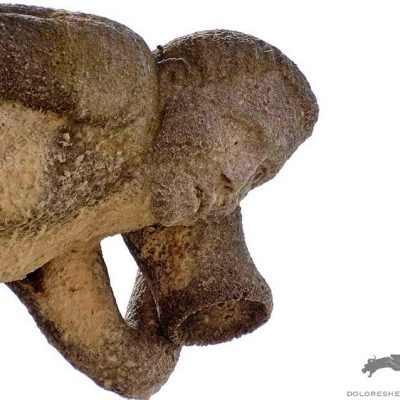 Las gárgolas que miran al mar
Las gárgolas que miran al mar The Gargoyles on the Cathedral of María Inmaculada in Vitoria: Part One
The Gargoyles on the Cathedral of María Inmaculada in Vitoria: Part One